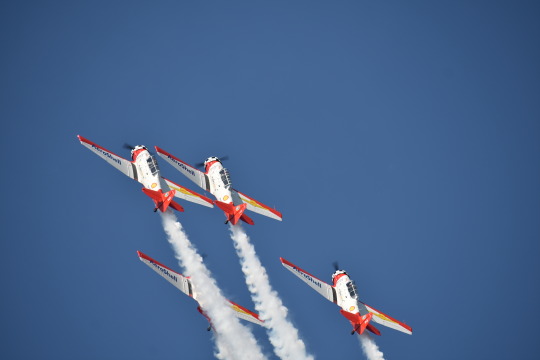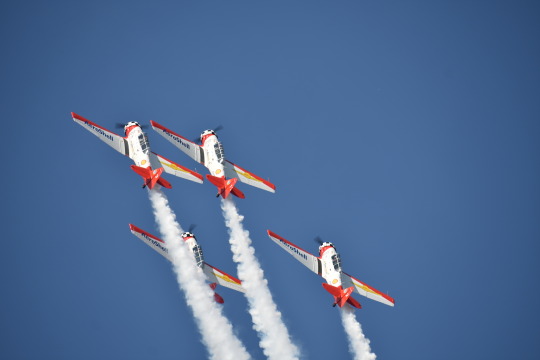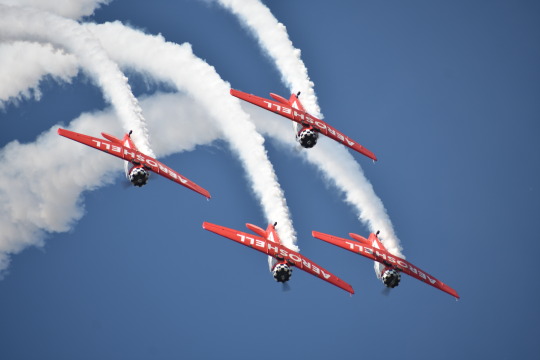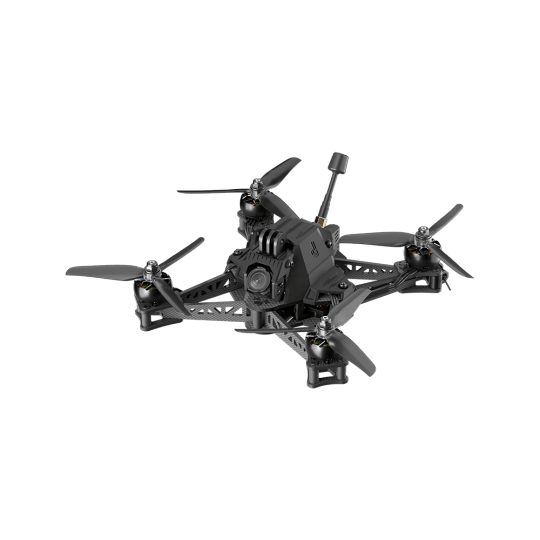#Aeroshells
Explore tagged Tumblr posts
Text
Attention-Worthy Links for November 27th, 2024
#Spectrum#Charter#WiFi 7#residential#business#telematics#fleet management#CAN FD#Trusted Platform Module#Microwave Assisted Deposition#curing during printing#Aeroshells#hypersonic#SETI#Arecibo Message#Sagan#exoplanets#Messier 13#SpaceX#Falcon Heavy#Dragonfly#Titan#RTG#Climate Change#Tipping Point#Steep Cost Increase#Jack Smith -#Trump#Two Cases Dropped#Supreme Court
0 notes
Text


Oshkosh 2023
25 notes
·
View notes
Text

The Aeroshell Aerobatic Team takes to the air in their North American AT-6 Texans
39 notes
·
View notes
Text
I may just be a parts guy, but I have a big discount on polyken 231/NSN 7510-00-074-4961.
2 notes
·
View notes
Text
The Essential Guide to Dowsil, Dupont, and Aeroshell Grease for High-Performance Applications

In today’s industrial and engineering sectors, reliable materials and lubricants are paramount for optimal performance and longevity. Whether it's for construction, aerospace, or manufacturing, products like Dowsil, Dupoint, and Aeroshell grease stand out for their exceptional performance and quality. These brands have become benchmarks in their respective domains, thanks to their innovative solutions that cater to a wide array of needs. This article explores the significance, features, and applications of Dowsil, Dupont, and Aeroshell grease, providing a comprehensive understanding of their impact on various industries.
The Pioneering Excellence of Dowsil
What is Dowsil?Dowsil is a globally recognized brand that specializes in silicone-based products, including adhesives, sealants, and coatings. Known for its durability and versatility, Dowsil offers innovative solutions for industries such as construction, automotive, and electronics. The brand has carved a niche for itself by delivering materials that meet stringent quality standards and adapt to challenging environments.
Applications of Dowsil
Construction: Dowsil products are widely used in construction for glazing, waterproofing, and structural bonding. Their high resistance to UV radiation and extreme temperatures makes them ideal for both residential and commercial projects.
Electronics: Silicone coatings from Dowsil provide insulation and protection for sensitive electronic components, ensuring reliability and longevity.
Automotive: Automotive manufacturers rely on Dowsil adhesives and sealants to enhance vehicle performance, especially in engine components and sealing systems.
Why Choose Dowsil?Dowsil's ability to maintain performance under harsh conditions sets it apart. Its products are eco-friendly, long-lasting, and designed to reduce maintenance costs, making them a trusted choice for professionals worldwide.
The Versatility of Dupont Materials
Overview of DupontDupont, a leader in material science, is synonymous with innovation and high-performance solutions. From Kevlar to Tyvek, the company has pioneered technologies that redefine safety, sustainability, and efficiency across various industries.
Key Dupont Products and Applications
Aerospace and Defense: Dupont materials like Nomex and Kevlar are extensively used in aerospace for their lightweight, flame-resistant, and durable properties.
Construction: Dupont’s Tyvek membranes are a cornerstone in modern building projects, offering superior insulation and moisture management.
Automotive: Dupont polymers and elastomers are integral in creating lightweight, fuel-efficient vehicles without compromising durability or safety.
Sustainability at the CoreDupont emphasizes sustainable practices by developing materials that reduce environmental impact. Its commitment to eco-friendly innovation ensures that industries can adopt greener practices without sacrificing performance.
Aeroshell Grease: The Ultimate Lubrication Solution
What Makes Aeroshell Grease Unique?Aeroshell grease is a high-performance lubricant designed for aviation and other demanding applications. Renowned for its superior thermal stability and water resistance, it ensures the smooth operation of critical components under extreme conditions.
Applications of Aeroshell Grease
Aviation: Aeroshell grease is specifically formulated for aircraft components, including wheel bearings, actuators, and landing gear systems. Its ability to withstand high pressure and varying temperatures ensures flight safety and efficiency.
Industrial Machinery: Beyond aviation, Aeroshell grease is utilized in heavy machinery to minimize wear and tear, extend equipment life, and reduce operational downtime.
Marine Applications: Its water-resistant properties make it an excellent choice for marine equipment, preventing corrosion in saltwater environments.
Advantages of Using Aeroshell GreaseThe exceptional properties of Aeroshell grease, such as anti-corrosion, load-carrying capacity, and oxidation resistance, make it indispensable in industries where reliability is non-negotiable.
ConclusionDowsil, Dupont, and Aeroshell grease represent the pinnacle of innovation and reliability in their respective fields. While Dowsil excels in silicone-based solutions for construction and electronics, Dupont’s advanced materials redefine safety and efficiency across industries. On the other hand, Aeroshell grease ensures optimal performance in aviation and heavy machinery, even under the harshest conditions. Together, these brands illustrate the importance of quality materials in achieving industrial excellence.
1 note
·
View note
Text
Optimize Aircraft Performance with AeroShell Turbine Oil 500 from Apex Lube
Discover the exceptional performance of AeroShell Turbine Oil 500 by Apex Lube, specially engineered for advanced turbine engines in aviation. This high-quality, synthetic lubricant is formulated to provide superior oxidation resistance, thermal stability, and long-lasting protection against wear and corrosion, even in extreme temperatures. Ideal for commercial and military aircraft, AeroShell Turbine Oil 500 enhances engine efficiency and reliability, meeting the stringent demands of high-performance aviation environments. Choose Apex Lube’s AeroShell Turbine Oil 500 to ensure optimum engine performance and durability in every flight.
0 notes
Text

Things, stuff, junk, etc.
#tin signs#signage#advertising#stuff#etc#flea market finds#farmall#woco pep#oilzum#aeroshell#automobilia
1 note
·
View note
Text

Sony A6600 with Tamron 150-500 f/5-6.7 - AeroShell Aerobatic Team, Cleveland National Air Show. September 2023.
0 notes
Text

Galileo's Jupiter Probe - December 7th, 1995.
"On this day 28 years ago, at about 5:00 pm EST, this 750 pound probe from NASA's robot spacecraft Galileo plummeted into Jupiter, becoming the first probe to fly through the atmosphere of a gas giant planet. Released by the Galileo orbiter in July of 1995, it had been coasting toward its rendezvous with the Solar System's largest planet. The probe smacked Jupiter's atmosphere at over 100,000 mph, slowing to less than 1,000 mph in a matter of minutes, experiencing a deceleration of about 230 times the Earth's surface gravity. It then deployed a parachute and descended, using sophisticated instruments to profile Jupiter's dense outer layers of hydrogen and helium gas. Pictured here before launch, the probe descent module (top) is suspended above its deceleration module aeroshell (bottom) prior to being joined. The aeroshell would protect the descent module from the initial shock and heat of entry, which initially created an intense fireball, over twice as hot as the surface of the Sun."
78 notes
·
View notes
Text

The Titan Demonstration Team with some beautiful formation flying! I love sunset airshows, and Stuart has one of the best! Every year, the flying is great, and the sunset is always beautiful.
.
The 2023 Stuart Air Show
.
#titan #titanteam #aeroshell #aeroshellaerobaticteam #t6 #t6texan #texan #ww2 #aerobatics #propeller #prop #aviationphoto #aviationphotography #airshow #airshowphotography #aviation #aviationgeek #airplane #military #shotoncanon #canon #canoneosr #eosr #canonphotography #photography #pictureoftheday #sigmalens #sigma60600mmsports #mylensrental #stuartairshow
#photography#pictureoftheday#canon#canonphotography#photooftheday#airshow#sigmalens#canonrebelt6i#canoneosr#aviationphotography#t6#t6 texan#texan#t 6 texan#t-6#eosr#eos#canon photography#airplane#aviationphotos#aviation photography#aviation#plane#ww2#wwii history#wwii era#wwii#propeller#prop
19 notes
·
View notes
Text








Full formation barnstormers loop sequence. Aeroshell Aerobatic Team. Oshkosh 2023
36 notes
·
View notes
Link
2 min readPreparations for Next Moonwalk Simulations Underway (and Underwater) A wireframe image of an aircraft being designed.NASA The Hypersonic Technology project is divided into four research topic areas. The first research topic is system-level design, analysis, and validation, which explores the impacts of technologies on vehicle performance. The second and third topics focus more specifically on propulsion technologies and vehicle technologies enabling hypersonic flight. The fourth topic area explores material technology that can survive and be reused in high-temperature hypersonic flight. System-Level Design and Analysis The System-Level Design, Analysis, and Validation research topic (RT-1) investments are focused on computational tool development and validation for hypersonic propulsion and vehicle system analysis methods including uncertainty quantification. RT-1 coordinates and performs definitive systems analysis studies to clarify the potential benefits of hypersonic vehicles and technologies for both high-speed civilian travel and space access and will use these studies to drive a technology portfolio focused on reusability, affordability, and reliability. An illustration of a hypersonic vehicle.NASA Propulsion Technologies The Propulsion Technologies research topic (RT-2) focuses on turboramjet, ramjet, integrated combined-cycle, dual-mode, and scramjet propulsion systems and associated propulsive mode transitions, combustor operability, fuels, controls, and sensors. RT-2 develops computational fluid dynamic technologies to enable predictive simulations of these systems. Hypersonic model test in the 8-Foot High Temperature Tunnel at NASA Langley.NASA Vehicle Technologies The Vehicle Technologies research topic (RT-3) investments focus on understanding aerodynamic and aerothermodynamic phenomena, such as high-speed boundary-layer transition and shock-dominated flows, to further technologies that improve aerodynamic performance as well as reduce aerodynamic heating. A model of a hypersonic vehicle and sensor in NASA’s 20-Inch Mach 6 Air Tunnel in the Langley Aerothermodynamic Lab.NASA High Temperature Materials The High Temperature Durable Materials research topic (RT-4) investments focus on advanced propulsion and vehicle materials research. Due to the operating conditions of hypersonic vehicles, most of the structures and materials are shared between propulsion and vehicle components, which include aeroshell, control surface, leading edge, propulsion, and sealing concepts. RT-4 examines the design and evaluation of potential structure and material concepts through component development and testing under relevant environments. In addition, because of the extreme environments the materials and structures must endure, RT-4 also includes development of advanced thermal and structural measurement methods. Read More About Hypersonic Technology About the AuthorShannon EichornShannon Eichorn is the Strategic Engagement Lead for NASA’s Advanced Air Vehicles Program. She is a former test engineer in supersonic wind tunnels and former engineer managing facilities, such as the Aeroacoustic Propulsion Lab, Glenn Extreme Environments Rig, and Creek Road Cryogenics Complex. Facebook logo @NASA@NASAaero@NASA_es @NASA@NASAaero@NASA_es Instagram logo @NASA@NASAaero@NASA_es Linkedin logo @NASA Explore More 3 min read NASA Launches Rocket to Study Hypersonic Aircraft Article 2 years ago 1 min read AETC Hypersonic Facilities Article 8 years ago 2 min read Rocket Launch Scheduled March 21 from NASA’s Wallops Flight Facility Article 2 years ago Keep Exploring Discover Related Topics Technology Transfer & Spinoffs Small Business Innovation Research (SBIR) / Small Business Technology Transfer (STTR) Manufacturing and Materials Why Go to Space Share Details Last Updated Jun 21, 2024 EditorJim BankeContactShannon [email protected] Related TermsHypersonic TechnologyAdvanced Air Vehicles Program
0 notes
Text
Afterburner 5 O3 6S HD | skyshop fpv
Afterburner - The Performance 5inch by 2RAW and iFlight
NOT A FREESTYLE DRONE - Afterburner is designed for professional pilots who use their FPV drones for cinematic work, this drone is not designed around being crashed into concrete and coming out fine. The drone is designed around aerodynamics and balance.

Highlight
Smallest Footprint
Afterburner has a 20% smaller footprint than traditional 5inch freestyle frames, this allows for easier transportation as well as increased agility and less drag - meaning better all round performance.
Aero Shell
The aeroshell controls the airflow around the body and within the drone. As the speed of the drone increases the aero shell acts as an air divider, preventing air from hitting the flat top plate. The shell also helps to shield the electronics from dirt and moisture so you can have more confidence in critical situations.
Advanced Truss Arms
The star design combined with the trusses ensures great stiffness while keeping the weight down, and perfect balance, delivering exceptional results when it comes to filming with buttery footage.
Bottom Mount Battery
Inspired from FPV racers, we took a bottom mount battery approach, this allows the battery to cause minimal drag possible and completely clears the top of the drone to allow for the Gopro mounting as well as clear line of sight for the GPS. Afterburner was built for the cinema pilot! The central battery also allows the CG to remain close to the middle of the body allowing for improved agility in the air.
No Prop in view with Gopro
In 16:9 the GoPro has no props in the view from 5 degrees all the way to 60 degrees.
DJI O3 HD Air Unit Low-Latency Digital Transmission
Up to 10 km video transmission range, enjoy a crisp and smooth real-time view in your goggles, even in environments with interference. (Source DJI)
4K Stabilized Video with 155° Ultra-Wide Angle
Together with high-grade imaging performance, it delivers exceptional visuals that will keep your audience on the edge of their seats. (Source DJI)
Specifications
Product Name: Afterburner 5 O3 6S HD
FC: BLITZ F7 Flight Controller
ESC: BLITZ E55 4-IN-1 2-6S 55A ESC
Video Transmission: DJI O3 Air Unit
Geometry: X-Frame
Frame: 210 mm wheelbase
Motor: XING2 2207 1750KV motors
Prop: GEMFAN 5.1X3.6X3 propellers
Weight: 472±7g (Without Battery)
Dimensions (L×W×H):148x148x64mm
Max Speed: 160km/h
Maximum Takeoff Altitude: 7000 m
Max Hover Time: Approx. 11mins with 6S Lipo 1400mAh battery W/O Load
Operating Temperature Range: -10° to 40° C
Antennas: Single Antennas
GNSS: GPS+SBAS+Galileo+QZSS+Glonass
Video Transmission
Product Name: DJI O3 Air Unit
Communication Bandwidth: Max 40 MHz
FOV (single screen): 155°
Communication Frequency:2.400-2.4835 GHz (RX only) / 5.725-5.850 GHz (RX and TX)
End-to-End Latency
With DJI FPV Goggles V2:
810p/120fps Video Transmission Quality: The latency is lower than 28 ms.
810p/60fps Video Transmission Quality: The latency is lower than 40 ms.
With DJI Goggles 2:
1080p/100fps Video Transmission Quality: The latency is as low as 30 ms.
1080p/60fps Video Transmission Quality: The latency is as low as 40 ms.
Max Video Transmission Bitrate: 50 Mbps
Max Video Transmission Range:10 km (FCC), 2 km (CE), 6 km (SRRC)
Operating Temperature Range: -10º to 40º C (14° to 104° F)
Power Input: 7.4-26.4 V
Audio Transmission: N/A
Packing List
1 x Afterburner 5 O3 6S HD BNF
1 x Screw Bag
2 x Battery Strap
2 x Battery pads
0 notes
Text
Landing On Mars: A Tricky Feat! - Technology Org
New Post has been published on https://thedigitalinsider.com/landing-on-mars-a-tricky-feat-technology-org/
Landing On Mars: A Tricky Feat! - Technology Org
The Perseverance rover and Ingenuity helicopter landed in Mars’s Jezero crater on February 18, 2021, NASA’s latest mission to explore the red planet. Landing on Mars is an incredibly difficult feat that has challenged engineers for decades: while missions like Curiosity have succeeded, its surface is littered with the wreckage of many failures as well. Why is landing on Mars so difficult?
Illustrations of the Entry, Descent, and Landing (EDL) sequences for Viking in 1976, NASA
Mars presents a unique problem to potential landers as it possesses a relatively large mass and a thin, but not insubstantial, atmosphere. The atmosphere is thick enough that spacecraft are stuffed inside a streamlined aeroshell sporting a protective heat shield to prevent burning up upon entry – but that same atmosphere is not thick enough to rely on parachutes alone for a safe landing, since they can’t catch sufficient air to slow down quickly enough. This is even worse for larger explorers like Perseverance, weighing in at 2,260 lbs (1,025 kg). Fortunately, engineers have crafted some ingenious landing methods over the decades to allow their spacecraft to survive what is called Entry, Descent, and Landing (EDL).
The Viking landers touched down on Mars in 1976 using heat shields, parachutes, and retrorockets. Despite using large parachutes, the large Viking landers fired retrorockets at the end to land at a safe speed. This complex combination has been followed by almost every mission since, but subsequent missions have innovated in the landing segment. The 1997 Mars Pathfinder mission added airbags in conjunction with parachutes and retrorockets to safely bounce its way to a landing on the Martian surface. Then three sturdy “petals” ensured the lander was pushed upright after landing on an ancient floodplain. The Opportunity and Spirit missions used a very similar method to place their rovers on the Martian surface in 2004. Phoenix (2008) and Insight (2018) actually utilized Viking-style landings.
Perseverance Rover’s Entry, Descent and Landing Profile: This illustration shows the events that occur in the final minutes of the nearly seven-month journey that NASA’s Perseverance rover takes to Mars. Image credit: NASA/JPL-Caltech
The large and heavy Curiosity rover required extra power at the end to safely land the car-sized rover, and so the daring “Sky Crane” deployment system was successfully used in 2012. After an initial descent using a massive heat shield and parachute, powerful retrorockets finished slowing down the spacecraft to about two miles per hour. The Sky Crane then safely lowered the rover down to the Martian surface using a strong cable. With its job done, the Sky Crane flew off and crash-landed a safe distance away. Having proved the efficacy of the Sky Crane system, NASA used this same method to attempt a safe landing for Perseverance in February 2021!
Source: National Aeronautics and Space Administration
Mars gifts – the best space gifts from the Red Planet, ranging from Mars-themed clothes to genuine, certified meteorites from Mars.
#Administration#aeronautics#air#Astronomy news#atmosphere#caltech#crash#curiosity#deployment#engineers#Events#Featured Space news#Heat#illustration#InSight#it#JPL#mars#Mars mission#martian#Martian atmosphere#mass#meteorites#Method#NASA#National Aeronautics and Space Administration#Perseverance#power#prevent#Profile
0 notes
Text
Shell lubricants | Caravan Oil Suppliers | Caravan Marketing
Shell lubricants is the number one global lubricant supplier, delivering market-leading lubricants to consumers in over 100 countries. Shell Lubricants brings world-class technological insights to its products, offering you the best formulations for your vehicle.
Shell lubricants provides a wide range of lubricant products quite like anyone else: Aeroshell aircraft piston engine oils, turbine engine oils, greases and hydraulic fluids; industrial gear oils, compressor oils, grease, and hydraulic fluids; heavy-duty diesel engine oil and transmission fluid.

Caravan Marketing provides Shell products including oils, fuels, and car services as well as exploration, production, and refining of petroleum products.
Shell Lubricants uses leading technology to produce innovative oils and greases that are designed to meet your varied needs and challenges. Shell’s extensive range of products includes conventional, blends, and ultimate-performance synthetic lubricants, which offer outstanding protection, long lubricant life, and system efficiency.
Visit for more info:
grease suppliers
lubricants distributorship
lubricant oil suppliers
shell hydraulic oil 68
shell high temp grease
oil distributors
oil distributor
Contact us:
Address
106 Road number 4 2nd phase, Jigani Industrial Area Anekal Taluk Bangalore, Karnataka 562106
Email
Phone
9980005255, 080 – 42297210
#lubricant oil distributor#Shell lubricants#lubricant oil suppliers#shell lubricants distributors#shell hydraulic oil 68#gear oil#shell high temp grease#3m tape distributors in bangalore#lubricants distributorship#lubricant suppliers#bearing maintenance training#Grease Distributor#"
0 notes
